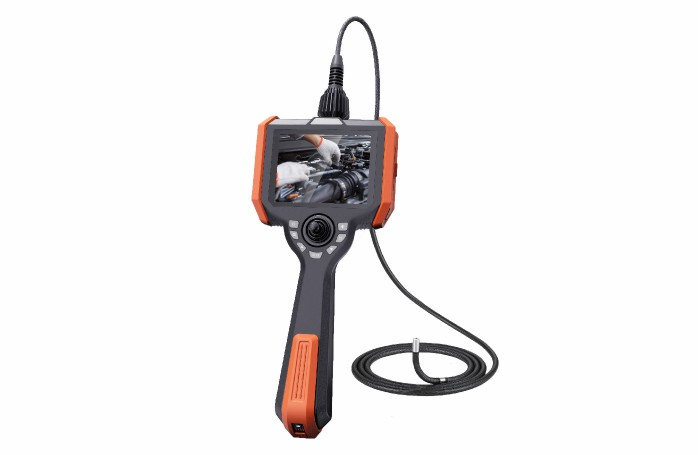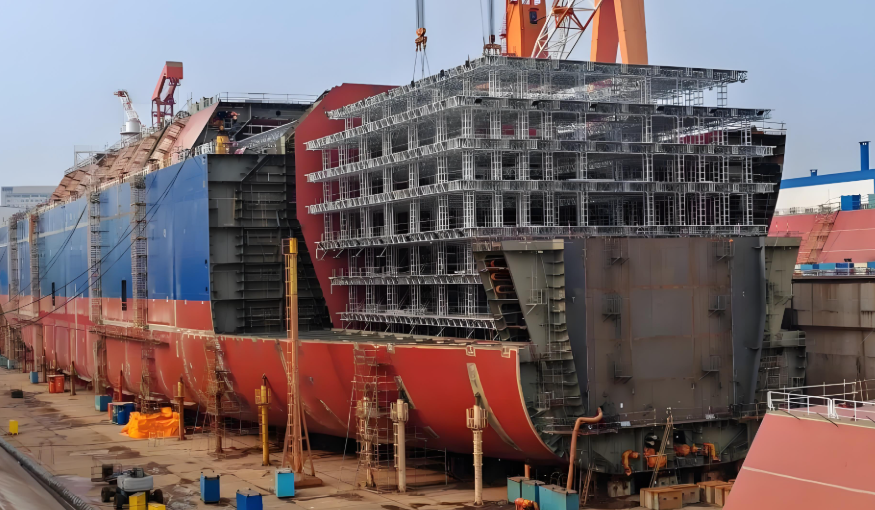Want to know more?
Don't miss any product updates on our industrial borescopes

Industrial borescope
solution service provider
Company Address
Office : 18F, Pingshanshouzuo, Pingshan District, Shenzhen,Guangdong
Contact Info
Ph: +86-0755-89588241

Industrial endoscopes are indispensable inspection tools in the field of shipbuilding and maintenance.With their non-destructive and visual characteristics, they can penetrate deep into the complex structure of ships, accurately locate defects, and ensure the safety and performance of ships. The following are its specific application scenarios, functions, and technical points in various aspects of shipbuilding:

Internal inspection of diesel engines
Application scenarios: Inspection of core components such as cylinders, pistons, cylinder liners, valves, and combustion chambers.
Specific applications:
Cylinder and piston inspection: Observe whether there are traces of cylinder pulling, wear grooves or corrosion spots (such as electrochemical corrosion caused by seawater cooling) on the inner wall of the cylinder, and evaluate the wear of the cylinder liner; check the elasticity of the piston ring and the state of the sealing surface to avoid power loss and fuel leakage.
Combustion chamber inspection: Check the carbon accumulation in the combustion chamber and the atomization effect of the injector nozzle to determine the combustion efficiency; check whether there are cracks in the cylinder head bolt hole to prevent the risk of engine explosion.
Technical requirements: The probe must have high flexibility (adapt to the internal bending path of the engine), some models must be resistant to high temperatures (the combustion chamber temperature can reach hundreds of degrees), and be equipped with high-definition lenses (such as 4K imaging) to identify fine cracks (micron-level defects).
Turbocharger inspection
Application scenarios: Detect wear, cracks and foreign body impact damage of turbine blades and compressor impellers.
Typical case: Detect tiny cracks on the edge of the impeller through an endoscope to avoid blade breakage during high-speed rotation, which may cause the supercharger to fail, or even cause a chain reaction of engine failures.
Application scenarios: Non-destructive inspection of hull plate butt welds, deck-hull joints, and bulkhead welds.
Specific applications:
Identify surface and near-surface defects of welds (such as pores, slag inclusions, incomplete penetration, and undercuts), with special attention to welds below the waterline of the ship (susceptible to seawater corrosion and fast defect expansion).
Detect the interlayer fusion quality of multi-layer welds to avoid hull leakage or structural strength reduction due to welding defects.
Technical features: Use a strong light illumination probe to penetrate the oxide layer on the weld surface; some scenes require the use of a flexible probe (such as a narrow cabin corner) to observe details with the image magnification function (such as 20x digital zoom).
Hull corrosion detection
Application scenarios: corrosion status assessment of cabin interior, ballast tanks, and bottom outer plates.
Specific applications:
Measure the depth and area of corrosion pits to determine whether the remaining thickness of the steel plate meets the strength requirements; detect coating peeling areas to prevent corrosion from spreading.
In the maintenance of old ships, use endoscopes to locate local corrosion and perforation hazards in the hull structure to prevent seawater from seeping into the cabin.
Fuel and lubricating oil system pipelines
Application scenarios: Detect scaling, blockage and cracks inside fuel delivery pipelines and lubricating oil coolers.
Specific applications:
Discover the deposition of fuel colloid on the inner wall of the pipeline (such as caused by inferior fuel) to avoid engine shutdown caused by poor fuel supply; check cracks at the welding of lubricating oil pipelines to prevent lubricating oil leakage from causing bearing locking.
Technical requirements: The probe must be resistant to oil corrosion, and some narrow pipelines (such as diameter ≤20mm) must use ultra-fine catheters (diameter 3-5mm).
Seawater cooling system inspection
Application scenarios: corrosion and biological adhesion detection inside seawater pumps, heat exchanger tube bundles, and subsea valve boxes.
Typical case: observe the accumulation of seaweed and shellfish on the inner wall of the heat exchanger copper tube through an endoscope to evaluate the cause of the decrease in cooling efficiency; detect the blockage degree of the subsea valve box filter and guide the cleaning and maintenance.
Internal inspection of confined cabins
Application scenarios: detect the internal structural integrity of cargo holds, fuel tanks, and cofferdams.
Specific applications:
Check the deformation and cracks of cabin ribs and longitudinal beams (such as structural damage caused by cargo impact in the cargo hold); detect the area where the cabin coating falls off to prevent cargo from corroding the bulkhead.
In liquefied natural gas (LNG) ships, detect the damage of the insulation layer of the low-temperature cabin to avoid heat leakage affecting the safety of cargo transportation.
Anchor chain locker and steering gear system inspection
Anchor chain locker inspection: observe the degree of wear of the anchor chain, water accumulation and corrosion in the bilge to ensure the reliability of the mooring system.
Steering gear system inspection: inspect the aging of rudder stock seals and cracks in the internal cavity of the rudder blade to prevent steering gear failure from causing loss of control of the ship.

Application scenario: When ship equipment is abnormal (such as abnormal engine noise, pipeline leakage), the internal fault source is quickly located through the endoscope to reduce the workload of dismantling.
Case: The main engine of a cargo ship made an abnormal noise. Through the endoscope, metal debris scratches on the inner wall of the cylinder liner were found. It was judged that the piston ring was broken and fell off, avoiding the dismantling of the whole machine, and the maintenance efficiency was improved by more than 50%.
Safety assessment of retired ships
Application scenario: Detect corrosion and cracks inside the pressure vessels (such as boilers) and storage tanks of retired ships, and evaluate the safety risks during the dismantling process.
Some underwater inspection scenarios (such as external inspection of the bottom of the ship) require the use of waterproof endoscopes (waterproof grade IP68), and the probe can withstand seawater pressure (such as 100 meters water depth pressure resistance).
Explosion-proof certification
In the inspection of oil and gas tanks of oil tankers and chemical tankers, the equipment must comply with explosion-proof standards (such as ATEX II explosion-proof) to avoid explosions caused by electric sparks.
Data recording and traceability
The inspection process requires real-time video recording, high-definition pictures, and the generation of inspection reports (such as defect location marking and dimensional measurement data) to meet the inspection and certification requirements of classification societies (such as ABS and DNV).
Summary
Industrial endoscopes run through the entire life cycle of "manufacturing-maintenance-repair-decommissioning" in shipbuilding, and can provide accurate visual inspection from engine core components to hull structures and piping systems. As ships develop towards large-scale and intelligent development, endoscope technology is also upgrading to "remote control + AI defect recognition" (such as transmitting images through 5G, AI automatically marks cracks, corrosion and other defects), further improving the efficiency and safety of ship inspections and protecting marine transportation.

Industrial borescope
solution service provider